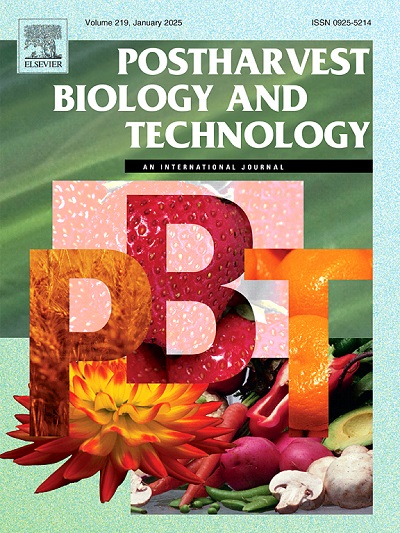Dynamic analysis of fungal community and metabolome associated with postharvest diseases in banana peel under natural condition
IF 6.4
1区 农林科学
Q1 AGRONOMY
引用次数: 0
Abstract
Bananas (Musa acuminate) are one of the most affordable and popular fruits in the world, and the fourth most important harvest crop after rice, wheat and maize. Due to the effects of physiological changes, flesh softening, and microbial invasion, and other factors, postharvest losses of bananas during transportation and sales exceed 25 %. Fungal infection of bananas leads to huge fruit loss and economic damage during postharvest period. To assess banana decay and related fungal communities under typical storage conditions, representative samples were collected and detected at J1–5 (0–20 D) time points after harvest. Metabolomic changes, temporal profiles of metabolites, and interaction networks between key fungi and their metabolites were explored. A sharp increase in yellow color was observed at J4 when peel browning appeared, and the commercial value was significantly reduced at J5. Fruit firmness gradually decreased over the experimental stages, whereas total soluble solids (TSS), titratable acidity (TA), and malondialdehyde (MDA) content gradually increased. The results revealed that Ascomycota was the dominant phylum, followed by Basidiomycota. Neocucurbitaria exhibited a higher relative abundance at J2 and J3, while Nigrospora and Cladosporium were the dominant genera at J4. In addition, the abundances of Colletotrichum, Golubevia, Moesziomyces, Acremonium, Neopyrenochaeta, and Penicillium at J5 were significantly higher than those at the other time points. The largest change was observed for comparison J3-vs-J4 with a total of 59 differential metabolites, followed by J4-vs-J5 with a total of 51 differential metabolites. The differential metabolites of J3-vs-J4 were mainly involved in carbohydrate metabolism-related pathways and membrane transport-related pathways, whereas J4-vs-J5 were largely enriched in secondary metabolite synthesis-related pathways. Moreover, profile 19 was significantly enriched in multiple pathways associated with carbohydrate metabolism. Finally, an interaction network revealed that Acremonium, Colletotrichum, and Nigrospora were significantly positively correlated with most of the differential metabolites. It should be highlighted that Colletotrichum promoted the occurrence of anthracnose during postharvest by upregulating myo-inositol. This study hold profound implications for enhancing our understanding of fungal community and metabolome associated diseases in the postharvest stage provided a valuable strategy of banana preservation based on pathogenic fungal inhibition and metabolite regulation.
求助全文
约1分钟内获得全文
求助全文
来源期刊

Postharvest Biology and Technology
农林科学-农艺学
CiteScore
12.00
自引率
11.40%
发文量
309
审稿时长
38 days
期刊介绍:
The journal is devoted exclusively to the publication of original papers, review articles and frontiers articles on biological and technological postharvest research. This includes the areas of postharvest storage, treatments and underpinning mechanisms, quality evaluation, packaging, handling and distribution of fresh horticultural crops including fruit, vegetables, flowers and nuts, but excluding grains, seeds and forages.
Papers reporting novel insights from fundamental and interdisciplinary research will be particularly encouraged. These disciplines include systems biology, bioinformatics, entomology, plant physiology, plant pathology, (bio)chemistry, engineering, modelling, and technologies for nondestructive testing.
Manuscripts on fresh food crops that will be further processed after postharvest storage, or on food processes beyond refrigeration, packaging and minimal processing will not be considered.
 求助内容:
求助内容: 应助结果提醒方式:
应助结果提醒方式:


